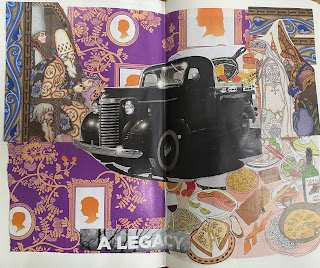Day 91 and 92 – My “instructor’s vision” for teaching Principles and Practices of Expressive arts therapy
 |
| Photo by Florian Roost on Unsplash |
Instructor vision for the course:
This class is about inter-related-ness and multiplicity – the interrelatedness and multiplicity of/in the arts, and the interrelatedness and multiplicity of/in us as a group, and the interrelatedness and multiplicity of/in counseling, arts therapy, and well-being. I am hoping to take a “radically relational and nature-inclusive approach to well-being” (Helne, 2021) as we consider ecological approaches to developing new theories of expressive arts therapy.
Expressive arts therapy (ExAT) is the newest creative arts therapy profession. At Lesley, ExAT takes a multi-theoretical approach to the use of multi-arts processes for inquiry, engagement, liberation, expression, and change. Students from all specializations, and even from outside of our program, take this course, not to become expressive arts therapists, but to understand the fundamental interrelatedness of the arts.
“Expressive therapies” is an umbrella term encompassing all fields within creative arts therapy – including art therapy, dance/movement therapy, drama therapy, expressive arts therapy, and music therapy. Within the expressive therapies, “Expressive Arts Therapy” is its own profession. Unlike music, art, dance or drama therapy, “expressive arts therapy” is not organized around the application of one main art modality to counseling; rather, it relies on the interrelatedness of the arts and an integrated arts therapy approach as the primary orientation.
Like in counseling and expressive therapies, education is a collaborative process. I believe that we create a learning environment together, like the “facilitative” environment you and your clients create in a therapeutic community or a therapy space. We will use the arts processes as a primary means of research, theory building, and inquiry; paying attention to what we want to know, and to the questions that drive our learning. We will also use the arts as a primary means of relationship building; paying attention to our connections and disconnections, our similarities and differences, and to the unique ways our multiplicity and care shows up. I hope we will actively engage in the experiment of learning, and experience freedom to be and see ourselves and each other, and to establish meaningful connections between the class material and our daily lives.
My hope is that we will pay special attention to what emerges – within ourselves, between us, within the space and through images, within the context of the university, the places we are from, and our larger global environment. Nothing happens outside of context. The particular people who come together for this course will each bring their own stories, experiences, history, hopes and resources with them into class. These will inform our capacity to attend to what is emerging within, between and amongst us. Everything within our world presents itself as an opportunity to learn. Your curiosity, engagement, and commitment to learning will be expected.


Comments